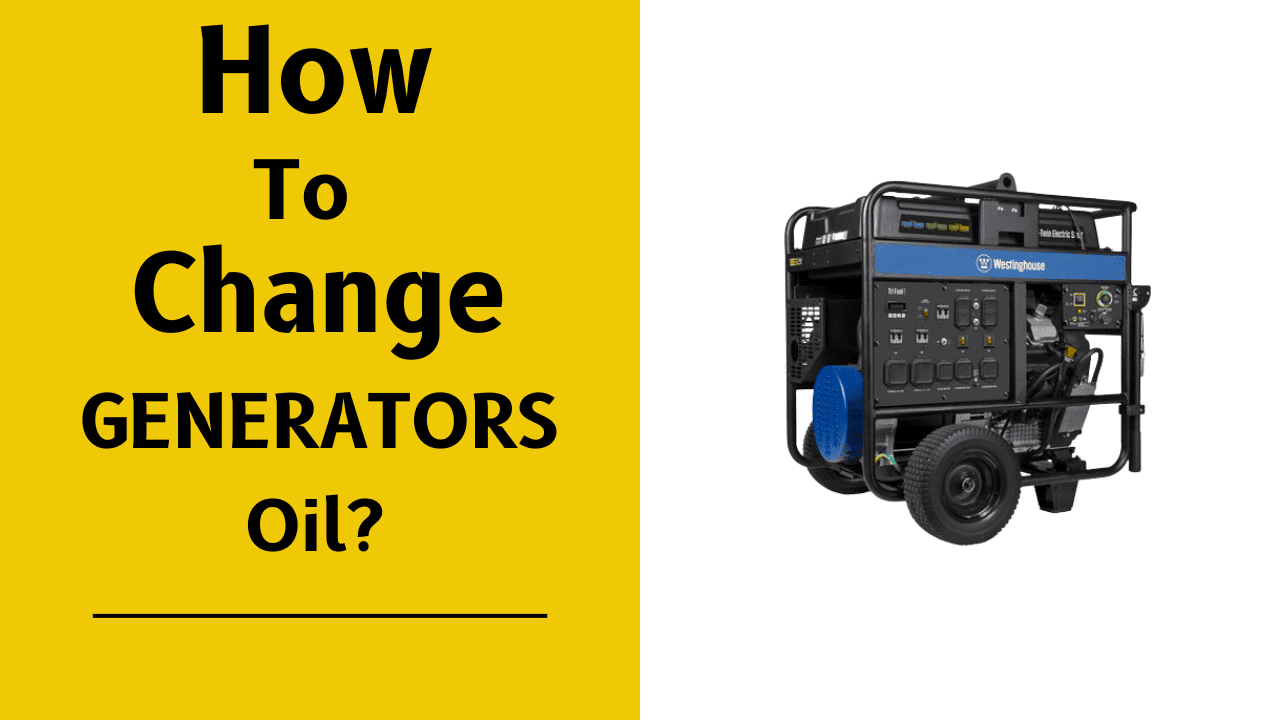How to Change Generator Oil
Changing the oil in your generator is one of the most important maintenance tasks you will need to perform. Proper oil changes will keep your generator running smoothly, extend its lifespan, and ensure it’s ready to deliver power whenever you need it.
If you’re not sure how to do it, don’t worry! This guide will walk you through everything step by step.
Tools and Materials You’ll Need
Before starting, gather the following tools and materials:
- Wrench: To loosen the oil drain plug.
- Oil funnel: To pour the new oil without making a mess.
- Oil pan or container: To catch the old oil.
- Cleaning rags or paper towels: To clean up any spills.
- Recommended oil type: Check your generator manual for the specific oil grade (e.g., SAE 10W-30).
Having everything ready will make the process faster and more efficient.
Step-by-Step Instructions to Change Generator Oil
Follow these simple steps to change your generator oil safely and efficiently:
Step 1: Turn Off the Generator and Let It Cool
Before doing anything, make sure the generator is completely turned off. If it’s recently been running, let it cool down for about 15-20 minutes. This will prevent burns and ensure you can handle the parts safely.

Step 2: Locate the Oil Drain Plug
Check your generator’s manual to find the oil drain plug, usually located at the base of the engine. Place your oil pan or container directly under the drain plug to catch the old oil.
Step 3: Open the Oil Drain Plug
Using a wrench or socket, carefully loosen and remove the oil drain plug. You’ll notice the old oil begin to flow out. Allow it to drain completely into the container. This step may take a few minutes, so be patient.
Step 4: Remove the Oil Dipstick
Unscrew the oil dipstick from the engine to allow air to flow and speed up the draining process. While you’re at it, wipe the dipstick clean with a rag so it’s ready for later.
Step 5: Reinstall the Drain Plug
Once all the oil has drained, securely screw the oil drain plug back into place. Be careful not to overtighten it, as this could damage the threads or make it difficult to remove next time.
Step 6: Add New Oil Using a Funnel
Insert a funnel into the oil fill port and slowly pour the recommended oil into the engine. Most generators will require between 0.6 to 1.1 quarts of oil, but it’s always best to check your manual for the exact amount.

Step 7: Check the Oil Level
Insert the clean dipstick back into the oil fill port, then remove it to check the oil level. The oil should fall within the “safe” range marked on the dipstick. If needed, add a little more oil until it reaches the correct level, but be careful not to overfill.
Step 8: Clean Up and Dispose of Old Oil
Use a rag or paper towel to wipe away any spills or drips around the engine. Pour the used oil into a sealed container and take it to a recycling center or an auto shop for proper disposal. Never pour old oil down the drain or throw it in the trash—it’s harmful to the environment.

Step 9: Restart the Generator
Turn on the generator to ensure it runs smoothly with the new oil. Listen for any unusual noises and check for leaks around the oil drain plug. If everything looks and sounds good, you’re all set!
Recommended Oil Types and Specifications
Choosing the right oil for your generator is critical for optimal performance. Most generators require SAE 10W-30 oil, which works well in various temperatures. However, in colder climates, you might want to consider synthetic 5W-30 oil, which performs better in freezing conditions. Always consult your generator’s manual for specific recommendations.
Where Predator Generators are made? Click here
How Often Should You Change Generator Oil?
The frequency of oil changes will depend on how often you use your generator. Here’s a general guideline:
- New Generator: Change the oil after the first 20-30 hours of use.
- Regular Use: Change the oil every 50-100 hours of operation or once every season.
- Extended Storage: If your generator has been sitting unused for months, change the oil before using it again.
Regular oil changes will help you avoid costly repairs and keep your generator in peak condition.
Why Changing Generator Oil is Essential
Over time, the oil in your generator will break down and collect dirt, dust, and debris. This can reduce its effectiveness in lubricating the engine parts, leading to increased wear and tear. Regular oil changes will prevent these issues and keep your generator performing at its best.
Safety Tips for Changing Generator Oil
- Always turn off the generator and let it cool before starting.
- Use gloves to protect your hands from oil and sharp edges.
- Work in a well-ventilated area to avoid inhaling fumes.
- Keep the oil pan steady to prevent spills.
These precautions will ensure your safety while maintaining your generator.
Troubleshooting Common Issues
- What if the Oil Drain Plug is Stuck?
Use a penetrating oil spray to loosen it. If that doesn’t work, gently tap it with a rubber mallet for extra leverage. - What if You Overfill the Oil?
Drain the excess oil using a siphon pump or by reopening the oil drain plug. Overfilled oil can cause leaks and damage the engine. - What if the Generator Still Doesn’t Run Smoothly?
Double-check the oil level and ensure you’ve used the correct oil type. If the issue persists, consult a professional.
FAQs
- What happens if I don’t change the generator oil?
Old oil loses its lubricating properties, leading to engine wear, overheating, and potential failure. - Can I use synthetic oil in my generator?
Yes, many generators are compatible with synthetic oil, especially in extreme temperatures. - How do I know when my generator needs an oil change?
Look for signs like dirty or dark oil, increased noise, or a warning light (if equipped). - What should I do with the used oil?
Take it to a recycling center or auto shop for proper disposal. Never dump it in the trash or down the drain. - Can I use automotive oil in my generator?
Yes, as long as it meets the specifications outlined in your generator’s manual. - How do you change the oil in a generator?
To change the oil in a generator:- Turn off the generator and let it cool down.
- Locate the oil drain plug and place an oil pan beneath it.
- Open the drain plug and allow the old oil to drain completely.
- Reinstall the drain plug securely.
- Add the recommended oil using a funnel, then check the oil level with the dipstick.
- Restart the generator to ensure it runs smoothly.
- How often should a generator oil be changed?
The frequency of oil changes depends on usage and the generator’s model:- For a new generator, change the oil after the first 20-30 hours of use.
- For regular use, change the oil every 50-100 hours or once every season.
- If the generator is stored for extended periods, change the oil before using it again.
Always consult your generator’s manual for specific recommendations.
- How do you remove old oil from a generator?
To remove old oil from a generator:- Locate the oil drain plug at the base of the engine.
- Place an oil pan or container underneath.
- Use a wrench or socket to open the drain plug and allow the oil to flow out.
- Remove the oil dipstick to improve airflow and speed up the draining process.
- Once the oil has drained completely, securely reinstall the drain plug.
- How much oil do you put in a generator?
The amount of oil needed depends on your generator’s model. Most portable generators require between 0.6 to 1.1 quarts of oil. Always check your generator’s manual for the exact capacity and recommended oil type. Overfilling the oil can lead to leaks and damage, so ensure the level stays within the dipstick’s safe range.
Changing generator oil may seem daunting at first, but with this guide, you’ll have it done in no time. Regular maintenance will ensure your generator runs smoothly and reliably whenever you need it.

